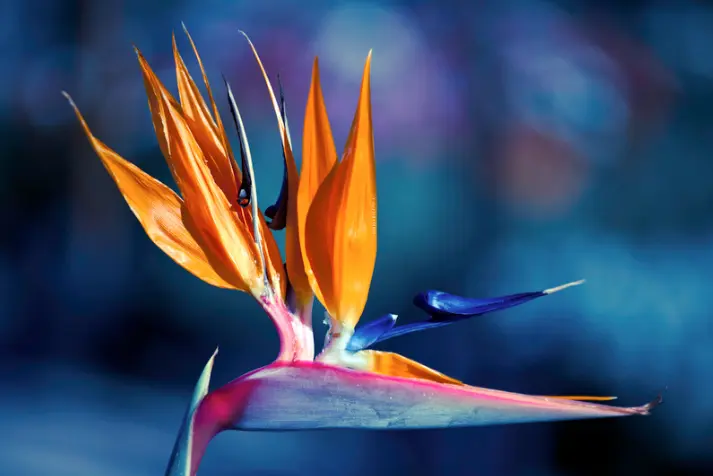If you’re looking for an extraordinary addition to your garden, the Birds of Paradise flower (Strelitzia reginae) may be just what you need. This exotic plant, known for its unique appearance, vibrant colors, and striking resemblance to a bird in flight, can transform your garden into a tropical paradise.
Getting to Know Birds of Paradise (Strelitzia reginae)
Birds of Paradise are known for their distinct characteristics and their suitability as ornamental plants. Let’s explore what you need to know about these remarkable flowers:
Appearance and Growth
Birds of Paradise flowers are known for their stunning, bird-like appearance. The vibrant orange and blue petals resemble a bird’s beak and plumage, making it a captivating centerpiece in any garden. The plant typically reaches heights of 3 to 5 feet, adding a touch of drama and exoticism to your outdoor space.
Climate and Growing Zones
These tropical beauties thrive in warm climates and are typically grown in USDA hardiness zones 10-12. They are often cultivated in pots in colder regions so they can be brought indoors during the winter months.
Planting and Soil
When planting Birds of Paradise, choose a well-draining soil mix and a location with bright, indirect sunlight. These plants prefer soil with good aeration to prevent waterlogged roots. Proper drainage is essential for their health.
Caring for Birds of Paradise
To ensure your Birds of Paradise thrive and produce their iconic flowers, follow these care tips:
Watering
Keep the soil consistently moist but not waterlogged. These plants prefer regular watering but do not tolerate standing water. Allow the top inch of soil to dry before watering again.
Fertilizing
Feed your Birds of Paradise with a balanced, water-soluble fertilizer during the growing season (spring and summer) to encourage healthy growth and flowering. Reduce fertilization in the fall and winter.
Pruning
Regularly remove dead or damaged leaves to maintain a tidy appearance and encourage new growth.
Common Challenges and Pests
While Birds of Paradise are relatively low-maintenance, they can face certain challenges:
Cold Sensitivity
In colder climates, protect your Birds of Paradise from frost and freezing temperatures. Bring potted plants indoors during the winter.
Pests
Watch for common pests like aphids and scale insects. Treat infestations promptly with natural or chemical remedies to protect your plants.
Conclusion
Birds of Paradise flowers are extraordinary additions to any garden, boasting their unique appearance and vibrant colors. Whether you’re an experienced gardener or just starting out, these striking plants can elevate your garden to new heights of tropical beauty. Start your Birds of Paradise gardening journey today and create a little piece of paradise in your own backyard.


Leave a Reply